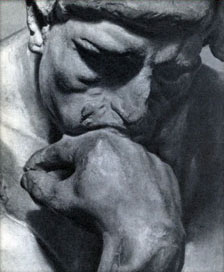Mathematical intuitionism a twentieth-century movement that reconstructs mathematics in accordance with an epistemological idealism and a Kantian metaphysics. Specifically, Brouwer, its founder, held that there are no unexperienced truths and that mathematical objects stem from the a priori form of those conscious acts which generate empirical objects. Unlike Kant, however, Brouwer rejected the apriority of space and based mathematics solely on a refined conception of the intuition of time.
Intuitionistic mathematics. According to Brouwer, the simplest mathematical act is to distinguish between two diverse elements in the flow of consciousness. By repeating and concatenating such acts we generate each of the natural numbers, the standard arithmetical operations, and thus the rational numbers with their operations as well. Unfortunately, these simple, terminating processes cannot produce the convergent infinite sequences of rational numbers that are needed to generate the continuum (the nondenumerable set of real numbers, or of points on the line). Some ‘proto-intuitionists’ admitted infinite sequences whose elements are determined by finitely describable rules. However, the set of all such algorithmic sequences is denumerable and thus can scarcely generate the continuum. Brouwer’s first attempt to circumvent this – by postulating a single intuition of an ever growing continuum – mirrored Aristotle’s picture of the continuum as a dynamic whole composed of inseparable parts. But this approach was incompatible with the set-theoretic framework that Brouwer accepted, and by 1918 he had replaced it with the concept of an infinite choice sequence. A choice sequence of rational numbers is, to be sure, generated by a ‘rule,’ but the rule may leave room for some degree of freedom in choosing the successive elements. It might, e.g., simply require that the n ! 1st choice be a rational number that lies within 1/n of the nth choice. The set of real numbers generated by such semideterminate sequences is demonstrably non-denumerable. Following his epistemological beliefs, Brouwer admitted only those properties of a choice sequence which are determined by its rule and by a finite number of actual choices. He incorporated this restriction into his version of set theory and obtained a series of results that conflict with standard (classical) mathematics. Most famously, he proved that every function that is fully defined over an interval of real numbers is uniformly continuous. (Pictorially, the graph of the function has no gaps or jumps.) Interestingly, one corollary of this theorem is that the set of real numbers cannot be divided into mutually exclusive subsets, a property that rigorously recovers the Aristotelian picture of the continuum. The clash with classical mathematics. Unlike his disciple Arend Heyting, who considered intuitionistic and classical mathematics as separate and therefore compatible subjects, Brouwer viewed them as incompatible treatments of a single subject matter. He even occasionally accused classical mathematics of inconsistency at the places where it differed from intuitionism. This clash concerns the basic concept of what counts as a mathematical object. Intuitionism allows, and classical mathematics rejects, objects that may be indeterminate with respect to some of their properties. Logic and language. Because he believed that mathematical constructions occur in prelinguistic consciousness, Brouwer refused to limit mathematics by the expressive capacity of any language. Logic, he claimed, merely codifies already completed stages of mathematical reasoning. For instance, the principle of the excluded middle stems from an ‘observational period’ during which mankind catalogued finite phenomena (with decidable properties); and he derided classical mathematics for inappropriately applying this principle to infinitary aspects of mathematics. Formalization. Brouwer’s views notwithstanding, in 1930 Heyting produced formal systems for intuitionistic logic (IL) and number theory. These inspired further formalizations (even of the theory of choice sequences) and a series of proof-theoretic, semantic, and algebraic studies that related intuitionistic and classical formal systems. Stephen Kleene, e.g., interpreted IL and other intuitionistic formal systems using the classical theory of recursive functions. Gödel, who showed that IL cannot coincide with any finite many-valued logic, demonstrated its relation to the modal logic, S4; and Kripke provided a formal semantics for IL similar to the possible worlds semantics for S4. For a while the study of intuitionistic formal systems used strongly classical methods, but since the 1970s intuitionistic methods have been employed as well. Meaning. Heyting’s formalization reflected a theory of meaning implicit in Brouwer’s epistemology and metaphysics, a theory that replaces the traditional correspondence notion of truth with the notion of constructive proof. More recently Michael Dummett has extended this to a warranted assertability theory of meaning for areas of discourse outside of mathematics. He has shown how assertabilism provides a strategy for combating realism about such things as physical objects, mental objects, and the past. See also BROUWER , CHOICE SEQUENCE , PHI- LOSOPHY OF MATHEMATICS , SET THEOR. C.J.P.
